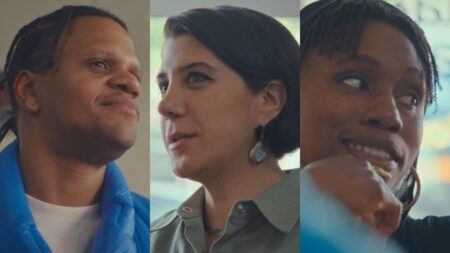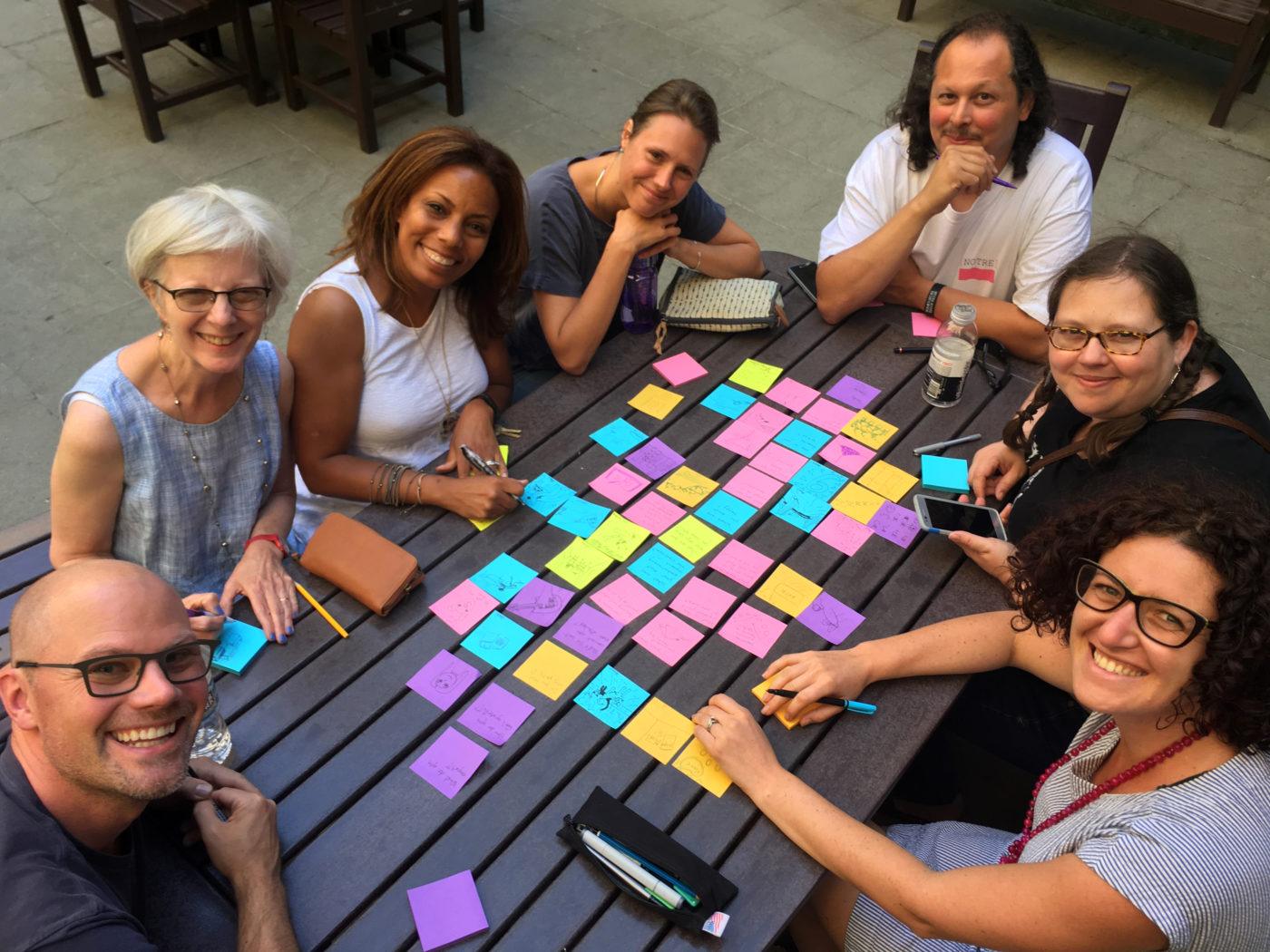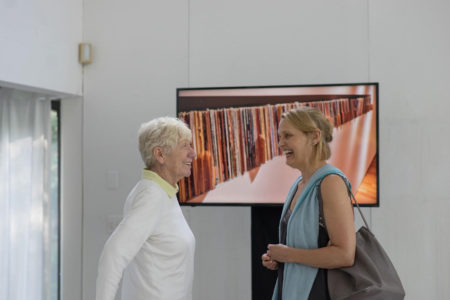“There should be something to propel you—a catalyst—to take you to the next place,” said Leonardo Drew of his artistic process, as he shared his Brooklyn studio with more than thirty educators on a warm July afternoon. This statement also holds true for the Art21 Educators Summer Institute. We have been lucky to be a part of the institute for the past two years, as members of the Year 6 cohort in 2016 and as alumni and presenters in 2017. Being an art educator can be isolating but, as mentioned on the first day of the program, the institute seems to bring together individual island states and transform them into a country.
For five days, a host of opportunities—such as workshops, studio visits, performances, and gallery visits—immersed the new cohort of institute participants, alumni, and Art21 staff in contemporary art education and inspired dialogues about possible approaches to engage our students with and through art in our schools. In workshops—on inquiry-driven curricula (developing big questions), trauma-informed practices, interdisciplinary learning, and removing fear and monotony from assessment processes—we were invited to approach the topics from our unique contexts; aiding us were others’ insights, which included the viewpoints of students from a session in Nick Kozak’s classroom at Manhattan Hunter Science School. The Summer Institute provides space to question and think deeply about learning that is relevant and significant to our school communities. These guiding questions frame and map paths of learning for the upcoming school year, providing a through line that is flexible enough to incorporate current events and special opportunities.
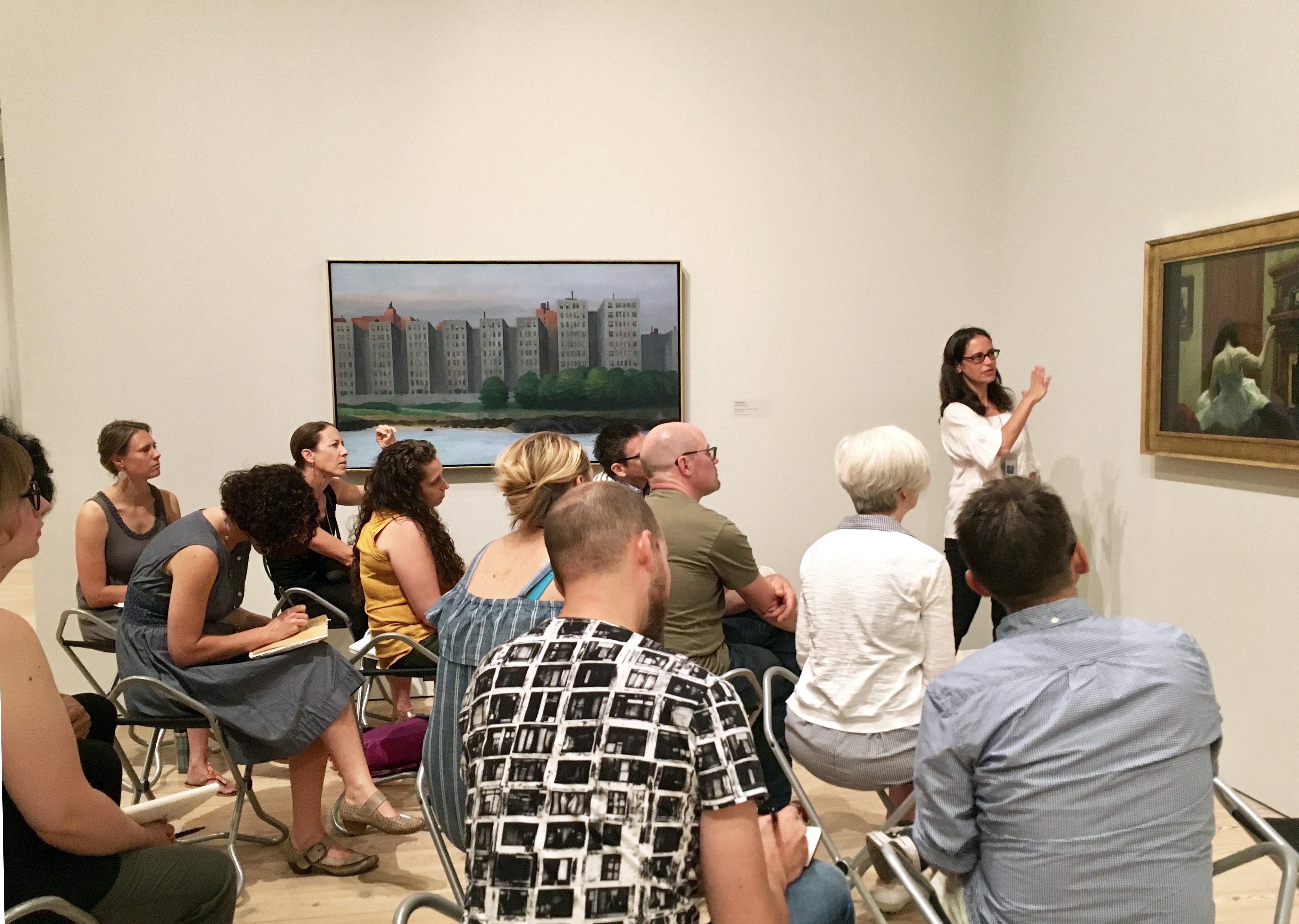
Art21 Educators participate in a museum learning session at the Brooklyn Museum. Photo: Beth Williams.
As noted by Jack Watson, a program mentor, the juxtaposition of visits both intuitive (to Drew’s studio) and cerebral (to the American Museum of Natural History, with David Brooks) was a strong framework for approaching professional development and artistic experience. The studio visits also reminded us to provide students a connection between art and learning, by sharing our practices as artist-educators. Drew’s statement, “We’re living in a period [when] common sense is threatened,” resonated with our thoughts of the current political and cultural moment. Brooks asked us to explore the potential of biodiversity and science through questioning and reframing one’s interpretive lens; for example, how do we relate to bacteria? And when we witnessed the performance/talk by Aki Sasamoto at The Kitchen, we felt our connections to artists living and working in New York City were strengthened.
Home to Art21 and teeming with artists at every career stage, New York City is the ideal backdrop for the Summer Institute. From open studios to galleries to public art, contemporary art is a language through which the city’s public is invited to participate in dialogues about the ideas and questions presented by the art. As Art21 Educators, we can bring this energy and spirit back to our teaching spaces, along with the inspiration from the art we have seen in person; nothing beats an in-person encounter with a work that takes one’s breath away or makes one see the world in a new light.

Art21 Educators with artist Leonardo Drew during a visit to his studio. Photo: Stacey Abramson.
Through the institute, collaborations take place between educators of all grade levels. Grade-specific inquiry groups naturally form, as well as professional learning communities guided by areas of relevance and exploration. Members of these groups support, research, gather, process, problem-solve, explore, share, connect, and investigate with each other, regardless of one’s grade-level or subject focus. The effect of this institute on our teaching is immeasurable. Perhaps the strongest experience that each educator takes away from the institute is the power of art coupled with community. We develop the courage to take risks as educators because of the support network we develop through the institute.
The institute reminds us of the way we felt when we finished our undergraduate studies: we feel like we are going to change the world through art. The lessons we shape and teach after being a part of the institute are more meaningful, radical, and ambitious. They make an impact in the lives of our students beyond the classroom walls; the lessons stay with the kids. This is the power of the voice and perspective of contemporary art and why the institute is so crucial in our teaching and artistic practices.

Photo: Stacey Abramson.
At the end of the six-day session, it is always difficult to leave. The institute catapults us into our teaching practices for the coming school year, giving us fuel that we need in the classroom. The institute inspires us to challenge ourselves as educators, ensuring that we are bringing thoughtful and relevant learning experiences to our students. Let the countdown begin for the 2018 Summer Institute!
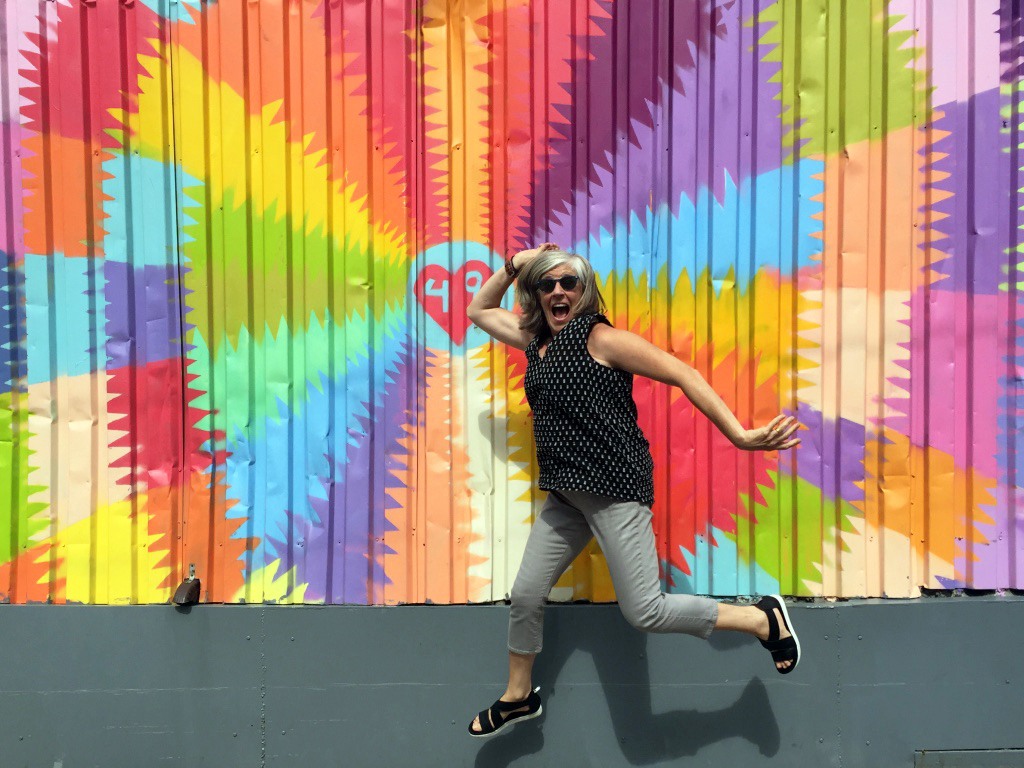
Photo: Cathy Karp.

Art21 Educators with artist David Brooks. Photo: Beth Williams.
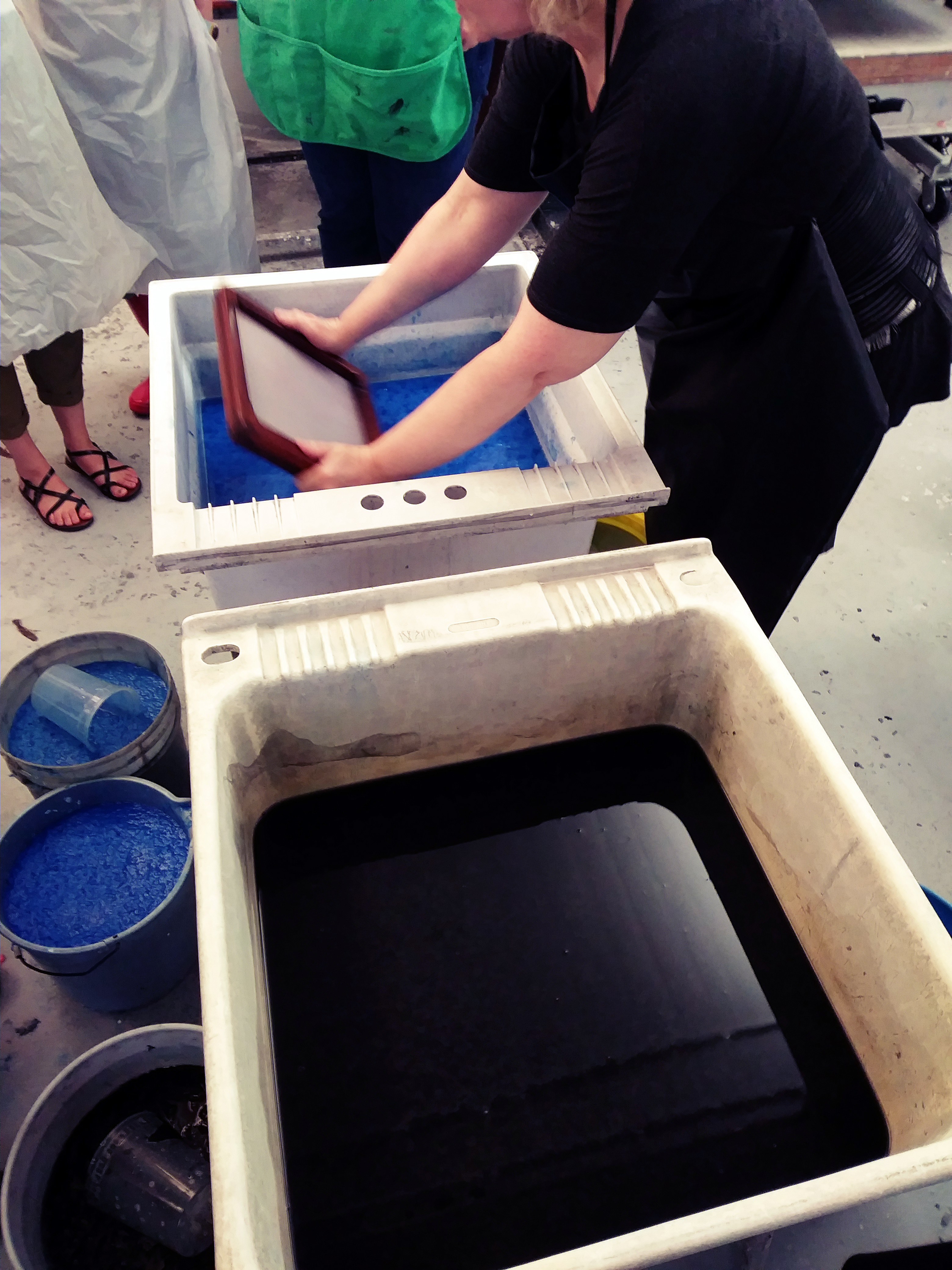
Art21 Educators participating in a paper-making workshop at Dieu Donné in Brooklyn. Photo: Joseph Iacona.

Art21 Educators at the Whitney Museum. Photo: Beth Williams.
Stacey Abramson is an artist, writer, and visual arts educator at Maples Collegiate in Winnipeg, Canada. Beth Williams is a TAB art educator at Meramec Elementary School in Clayton, Missouri. Both joined the Art21 Educators program in 2016, participating in the Year 6 cohort.
